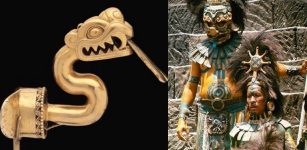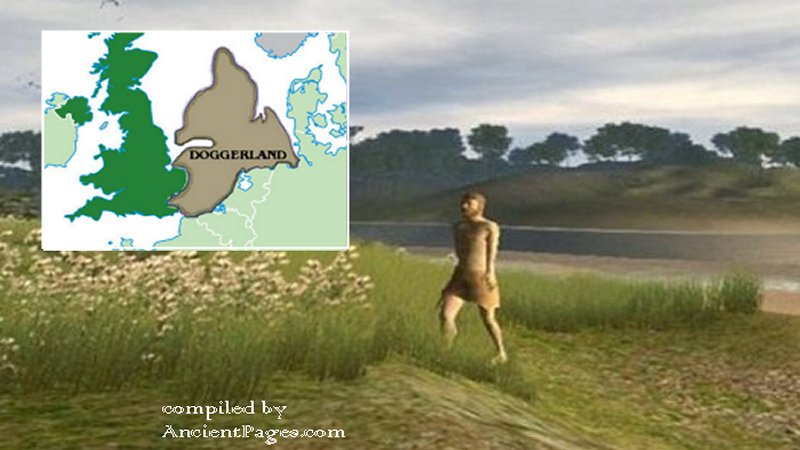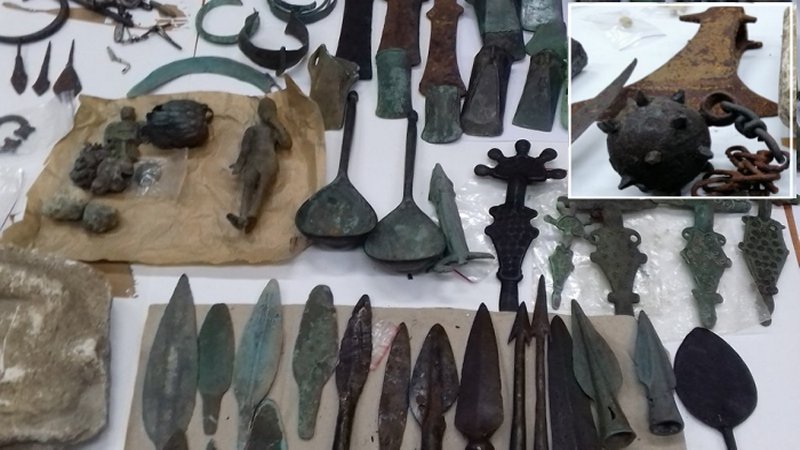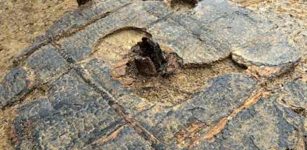Hoard Of Roman Bronze Coins Turns Out To Be Offering For Safe Crossing
Conny Waters – MessageToEagle.com – Several years ago, two amateur archaeologists from Brabant discovered over a hundred Roman coins near Berlicum in the north of the province. Berlicum was most probably founded between 600 and 700 AD.
After years of research, it now appears that the location, close to a ford in the river, was a site for offerings. Another interesting fact is that the coins offered were chosen very precisely.
Dupondius of Emperor Trajan showing a selection of military scenes. You can see Emperor Trajan in military uniform between two trophies. Credit: Portable Antiquities of the Netherlands; PAN 00035081
“This was an important eureka moment in my academic career.”
Amateur sleuths Nico and Wim van Schaijk found the 109 Roman coins towards the end of 2017 in a field near to Berlicum, close to the River Aa. Properly and correctly, they reported their find to Portable Antiquities of the Netherlands, so that researchers could study the coins and their location. Now, three and a half years later, the Cultural Heritage Agency of the Netherlands has published a report.
What made you conclude that this must have been a site for offerings?
Claes: “You can determine from different characteristics that this was not a hoard of valuable treasure that people deliberately buried for later. With finds like that, the coins would be in a chest or amphora, but that wasn’t the case here. These coins were lying spread over a large area and were just loose in the earth. Also, they turned out not to be particularly valuable coins. What we found were mainly bronze coins; there were no gold ones, for example.
An as of Emperor Trajan; the reverse shows Victoria, goddess of conquest, walking. Credit: Portable Antiquities of the Netherlands; PAN 00035079
That’s not what you’d expect if the find were a treasure trove. Finally, the coins were from a very broad time period: the oldest coins date from the Republic [up to 27 BC, Ed.] and the most recent from the time of Emperor Marcus Aurelius [up to 180 AD]. This indicates that the coins must have been deposited by different people over a long period.”
What was the deciding factor?
“In the 1832 entry in the land registry—one of the Netherlands’ oldest detailed maps—my colleagues noticed that at that time there was a path cutting across the river. Apparently, there was a ford on this spot, where people could wade through the river. Later, the ford fell into disuse. This information, together with the find of the coins, convinced us that travelers in Roman times brought offerings here for a safe crossing. It may not have been a particularly rapidly flowing river, but for traders in particular it was important to be able to transport their goods safely to the other side. And there’s also the fact that in ancient times rivers always had some sacred connections.”
What surprised you most about this site?
“I was mainly involved in studying the coins themselves. I looked at whether the travelers selected particular coins for their offerings. It seems that they did: coins with military imagery seemed to be popular offerings. Initially, I thought that was odd because what does a military image have to do with a safe crossing? But then I realized that this was also quite common before Roman times: we regularly find offerings of axes, swords, and helmets in other rivers and stretches of water.
See also: More Archaeology News
This could be a pre-Roman custom that continued in the Roman period but in a different way. That was an important eureka moment in my academic career.”
Did the amateur archaeologists play any further role in the story?
“Definitely. We stayed in contact with Nico and Wim throughout the research. They also helped with additional field research at the find site. For me, this is a good example of how amateur archaeologists and academics can complement one another. That starts with amateur archaeologists reporting their finds, as Wim and Nico did, to Portable Antiquities of the Netherlands. To show our thanks, we recently presented them with the first copy of our report.”
Written by Conny Waters – MessageToEagle.com – AncientPages.com Staff Writer












